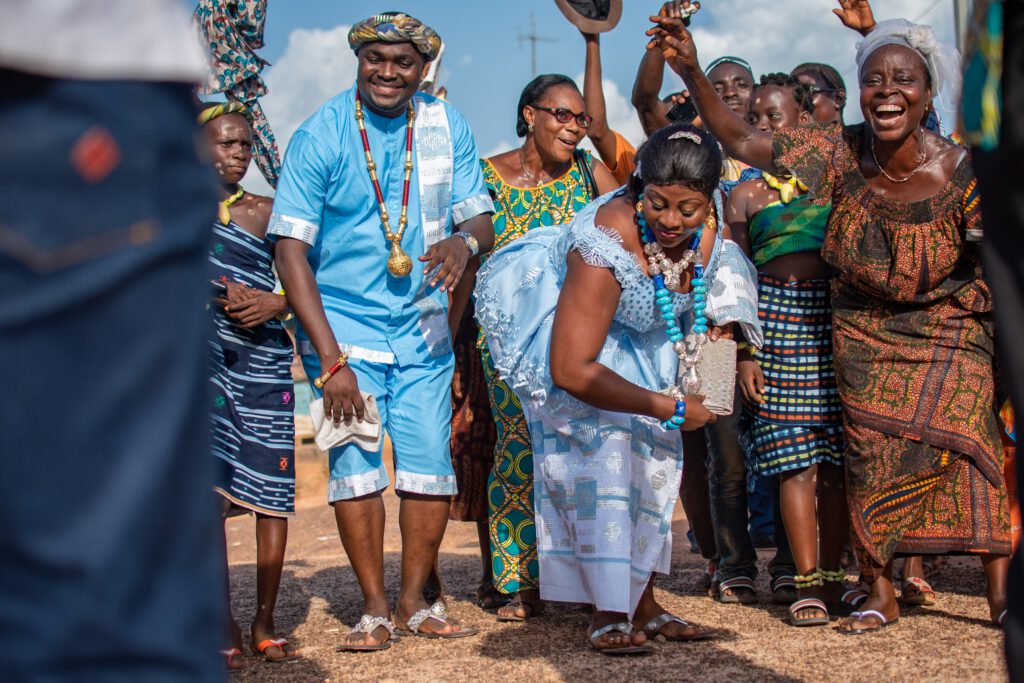What is participant observation? Where does this research method originate? In which cases is it used? And most importantly: How can you successfully conduct this method yourself, which has sometimes been called “the last great adventure of social science” (Evans-Pritchard, 1973)?
If these questions matter to you, then you’re in the right place. Grab a drink, sit back, and enjoy this article as a smooth introduction to your own ethnographic adventure.
Ethno…what? Don’t worry, we’ll get to that.
Ethnographic Research
Participant observation is a core method in ethnographic research, often simply referred to as fieldwork. The aim is to gain insights into human behavior, group dynamics, and social interactions.
The subject of study can range from an indigenous tribe in Papua New Guinea to a tech startup in a small town in Germany.
The word “ethnos” comes from ancient Greek and roughly means “foreign people.” This research approach has its roots in anthropology and ethnology. Historically, it was used in expeditions to remote regions or isolated islands to study the people, tribes, and cultures living there. Today, ethnographic methods are widely used in various disciplines, including sociology, education, social psychology, and even business studies.
Observation
Observation is probably the most well-known method in ethnography. Spradley (1979) describes it in very simple terms:
“I want to understand the world from your point of view. I want to know what you know in the way you know it. I want to understand the meaning of your experience, to walk in your shoes, to feel things as you feel them, to explain things as you explain them. Will you become my teacher and help me understand?”
If you have developed a research question that can be answered by describing the behavior of individuals in their natural environment, then observation is a suitable method. By observing, you can see with your own eyes what you aim to study.
In contrast, methods like expert interviews or surveys require you to rely on participants’ statements being accurate and honest.
As a result, observation is one of the empirical methods where researcher subjectivity plays the largest role. Subjectivity is common in qualitative research, but in observation, it is even more pronounced, as everything is filtered through the researcher’s own perceptions and senses.
Non-Participant Observation
In non-participant observation—just as the name suggests—you remain an outsider, merely watching without engaging in the activity. Besides the distinction between participant and non-participant observation, another key factor is whether the observation is overt or covert.
In overt observation, you ask for permission beforehand, introduce yourself, and explain why the study is being conducted and how it might be beneficial for the participants.
Covert observation, on the other hand, takes place without the knowledge of those being observed. While this might yield highly authentic insights, it is rarely used—and for good reason. Ethically, covert observation is highly problematic and would have difficulty passing an ethics committee review.

Participant Observation
The “participant” aspect of participant observation refers to the extent to which you, as the researcher, are involved in the situation. There are different roles you can take on.
Gold (1958) identified four different roles that researchers can assume in participant observation:
Complete participation
When you are already a full member of the group you are studying, such as when you observe a company where you work as a student assistant.
Active participation
When you try to engage in the same activities as the group members but are still an outsider.
Moderate participation
When you alternate between observing and participating to maintain a balanced approach.
Passive participation
When you are present but do not engage in the activities, interacting minimally with the group.
For example, if you were studying an indigenous tribe in the Amazon, you might actively take part in a spiritual ritual. This would make you highly involved in the experience, possibly giving you access to insights and conversations you might not otherwise have. This would be considered active participation. Alternatively, you could just follow along quietly, staying in the background while smiling and clapping along—this would be passive participation. In non-participant observation, you would avoid any interaction altogether.
However, active participation also has a significant drawback: the people you observe may alter their behavior simply because you are participating. This effect must always be considered and critically discussed.
Additionally, you can conduct conversations with participants. These ethnographic interviews are quite different from structured expert interviews. There is no pre-defined questionnaire; instead, conversations occur naturally within the setting. The goal is to build a respectful and trusting relationship. These interactions might take place around a campfire outside usual working hours or in an unexpected setting. Instead of recording the conversation, you take notes and later document your insights in a research diary.
The Three Phases of Participant Observation
To help you prepare for your participant observation, here are three key phases that this method can be divided into (Spradley, 1980; Flick, 2019):
Describing the Research Environment
At the beginning of your participation in a group, you are an outsider and need time to acclimate. Your presence is something new for the group members, and they must adjust to having you around. During this phase, it is advisable to remain somewhat in the background and start by thoroughly documenting the environment. Write down everything you observe—what you see, hear, and experience. Simultaneously, take the opportunity to introduce yourself and gradually establish rapport with individual members.
Focused Observations
Once you have become an accepted presence within the group, you can transition to more purposeful observations. At this stage, you can initiate targeted conversations and immerse yourself in situations that directly contribute to answering your research questions. Your observations become more structured as you begin to refine the focus of your study.
Selective Observations
In the final phase of your study, you will have already gathered significant insights and formulated preliminary answers to your research questions. Now, your objective is to seek out specific examples and supporting evidence that substantiate your findings. This phase requires critical thinking and a keen eye for patterns and consistencies in behavior.

Data Collection and Analysis in Participant Observation
When it comes to collecting data, you can take either a structured or unstructured approach. If you have created checklists, formulated guiding questions, or prepared other documentation in advance, you are following a structured approach.
Conversely, if you enter the observation setting with an open mind and an empty notebook, allowing observations to guide your documentation process, your approach is unstructured. Both methods have their advantages and limitations.
Your research diary plays a crucial role in the analysis process. Alongside taking notes during your observations, you should later expand on them in your diary, adding reflections and interpretations. To ensure that you do not overlook documentation, consider setting aside dedicated time—perhaps a few hours or an entire day—away from the field to write down your impressions in detail.
After data collection, qualitative analysis techniques can be applied to make sense of the findings. Common methods include:
- Thematic Analysis: Identifying recurring patterns, themes, and categories within the observational data.
- Coding: Assigning labels to different aspects of the data to systematically organize insights.
- Narrative Analysis: Examining how observed interactions and behaviors construct meaning within a specific social context.
These approaches help translate raw observations into meaningful interpretations, allowing you to draw conclusions from your study.
Now, lace up your boots and embark on your research adventure!
